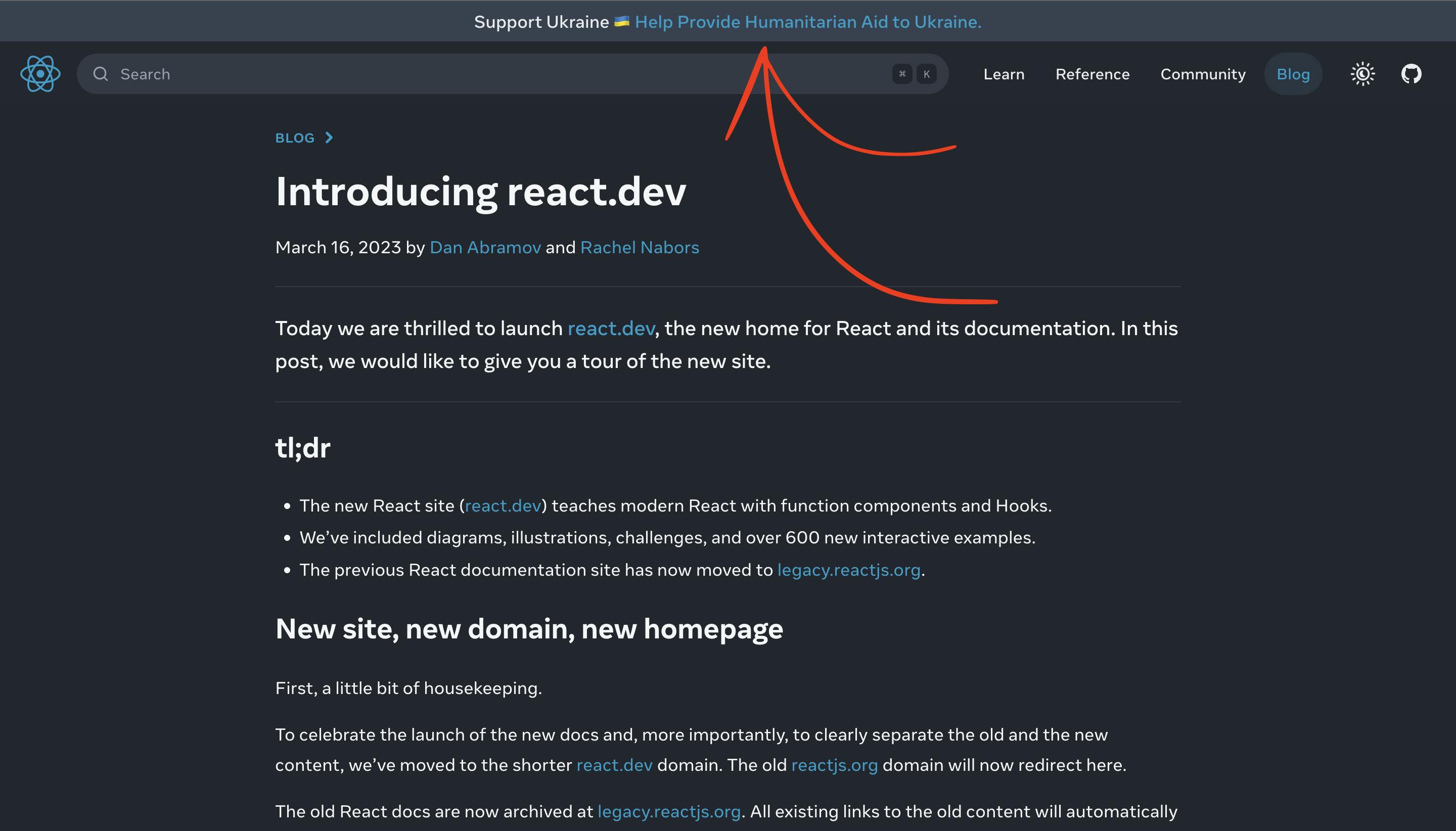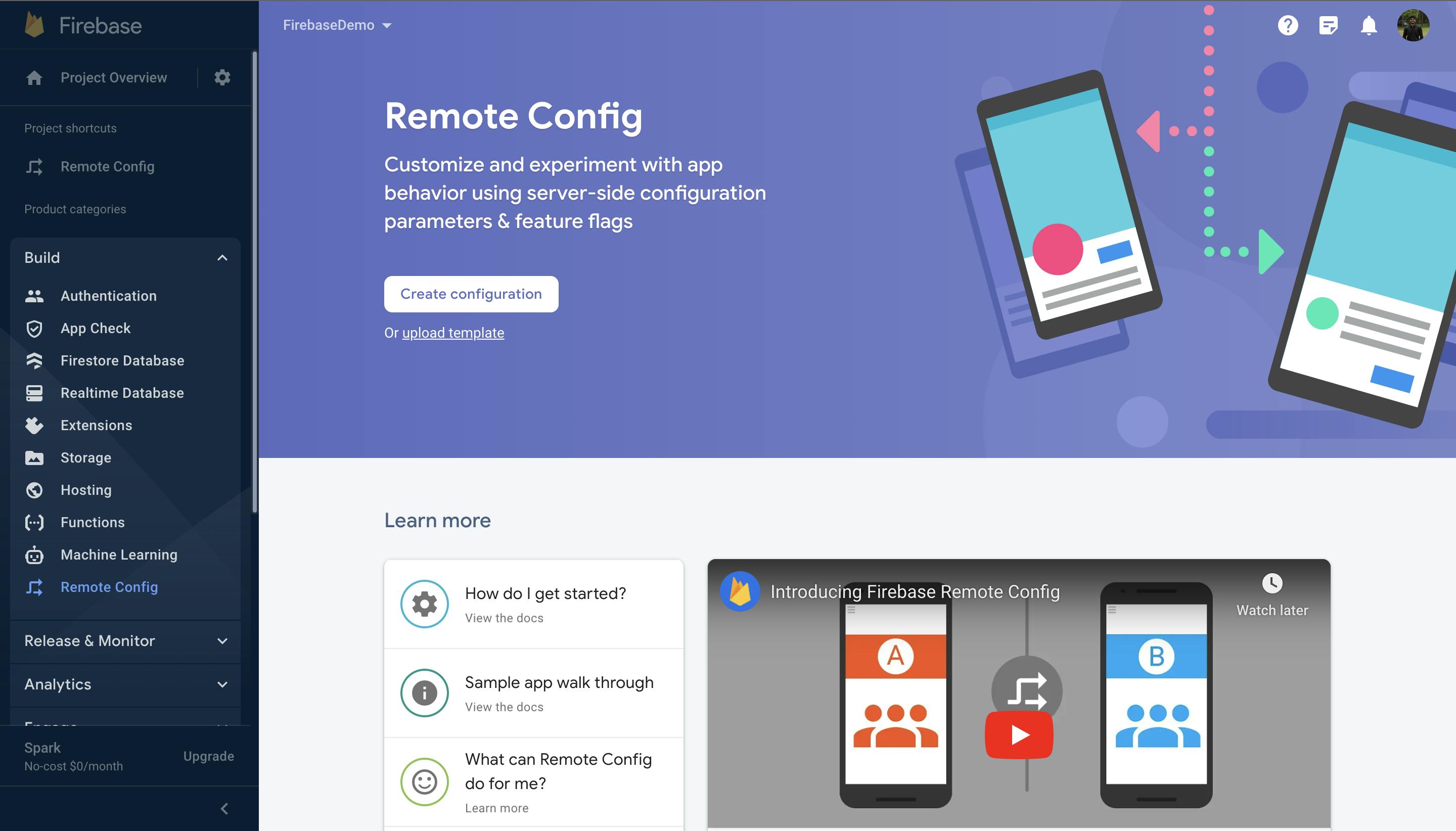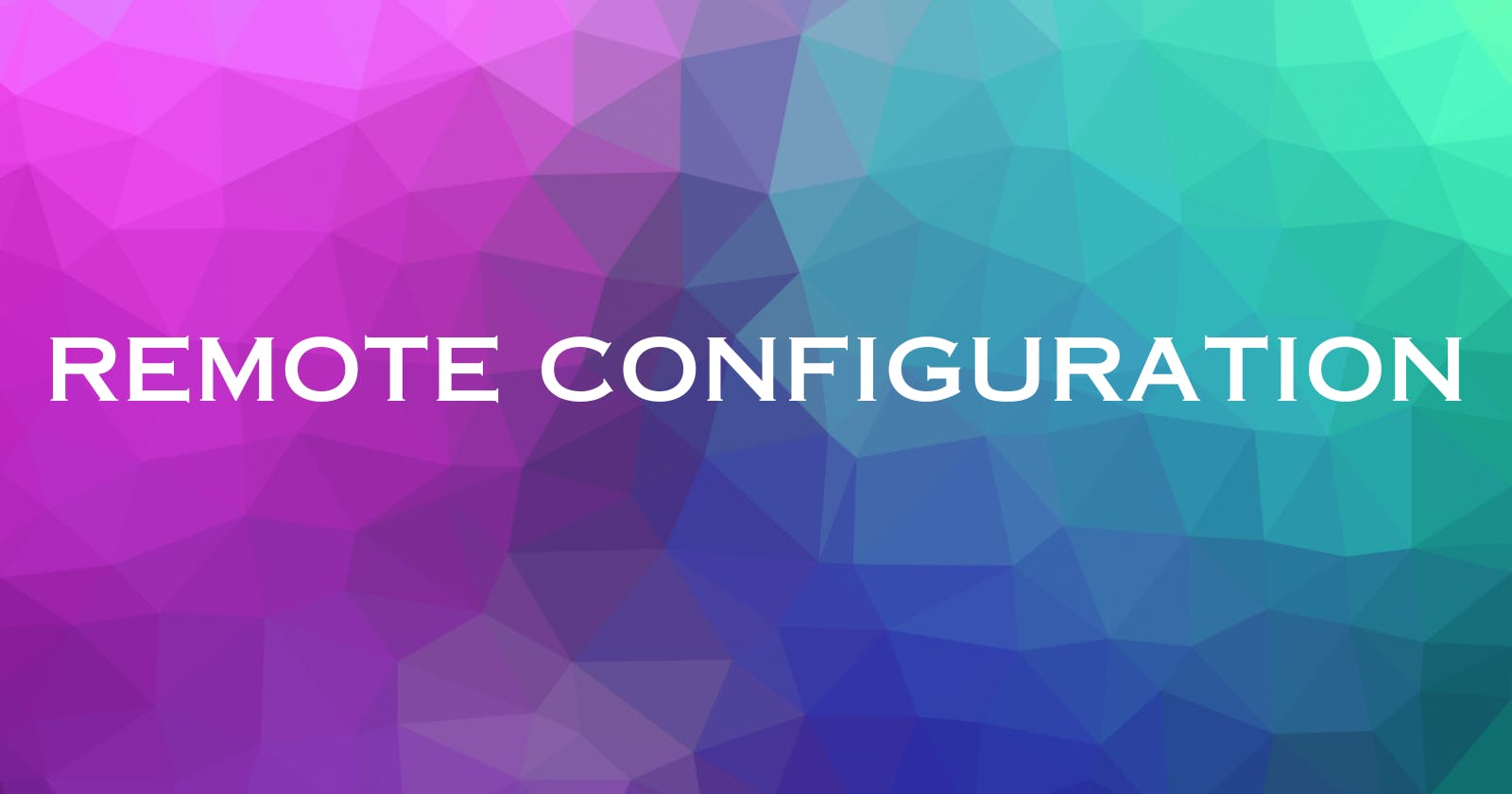Remote Configuration
It's also called as Remote Config (short form of Remote Configuration).
Remote configuration is a technique where the configuration of an application or service is stored on a remote server and can be updated without requiring a new release or deployment of the software.
This allows developers to control the behavior of their applications in real time and make changes without disrupting the user experience.
One way to use remote configuration to display banners is to define a flag in the configuration that controls whether or not the banner is displayed. When the configuration is fetched from the remote server, the application can check the value of this flag and display the banner if it is set to true.
The banner can also be customized based on the configuration values, such as the text or graphics used.

Remote configuration can be used for more than just displaying banners, it can be used to control any aspect of the application or service that can be configured. This includes enabling or disabling features, setting default values, adjusting thresholds, and more.
For Eg. the developers can revoke the access of the Edit button for certain users or all users.
By using remote configuration, developers can experiment with different configurations and adapt their software to changing user needs and market conditions without requiring a new release.
Remote Config services are provided by Google Firebase, LaunchDarkly, FlagSmith (One I recommend), and many more(Do comment if you know some 😀)

The below picture shows you a feature flag called name, which can be used throughout the app. And when we publish/change the name to another variable our whole app will use the new name.
This reduces a lot of complications for a small change.

Used flagsmith for the above example!
Use cases of Remote Config
Feature Flagging: As mentioned earlier, one of the most common use cases for remote configuration is feature flagging. By using feature flags, developers can control the behavior of their applications in real time, enabling or disabling features without requiring a new release or deployment.
A/B Testing: Remote configuration can also be used for A/B testing, which is the practice of testing two or more versions of an application or service to determine which version performs better. By using remote configuration to switch between versions, developers can test different features, layouts, or designs and measure the impact on user engagement and retention.
Configuration Management: Remote configuration can be used for managing application configurations, such as default values, thresholds, and other settings that can be configured. By storing configurations remotely, developers can easily make changes and distribute them to all users without requiring a new release or deployment.
Personalization: Remote configuration can be used for personalization, where different configurations are used for different users or user groups. By using user profiles, developers can tailor the user experience based on user preferences, behavior, or demographics.
Service Configuration: Remote configuration can be used for configuring backend services or microservices. By using remote configuration, developers can quickly adapt to changing requirements or conditions and optimize the performance and availability of their services.
Overall, the remote configuration provides developers with greater flexibility, control, and agility, enabling them to iterate faster, deliver better user experiences, and respond to changing market conditions.
Hope you liked this blog, till then you can follow me on @twitter & @github 🫡
